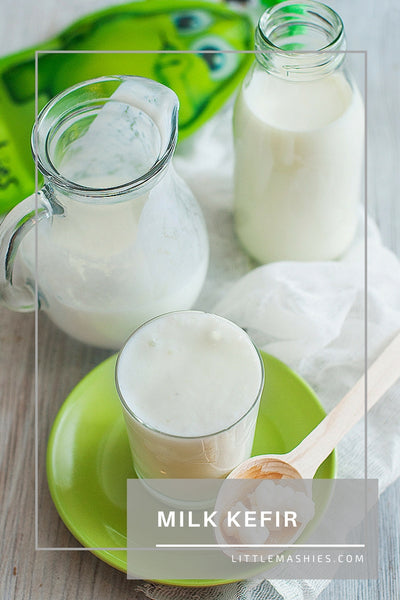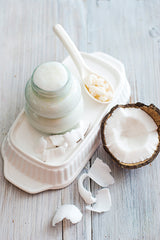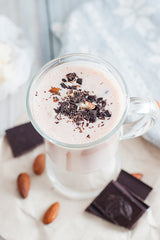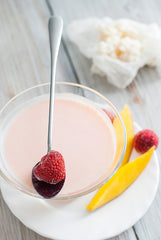Basic Milk Kefir
Equipment:
1 x Fermenting Jar
1 x Funnel (if transferring to a bottle)
1 x Plastic Strainer
1 x Storage Jar
1 x Plastic Spoon
Ingredients:
4 Tbsn Milk Kefir Grains
4 Cups Milk
Method:
Step 1:
Place Milk Kefir grains into the fermenting jar using a plastic spoon.
Step 2:
Add milk to the jar and give the mixture a brief stir.
Step 3:
Leave the fermenting jar with the cap on top of your bench top if you live in a warm environment. Alternatively if you live in a cool environment place the jar in a warm (but not hot) part of the house. Anywhere from 22- 30 degrees Celsius is fine. Different strains of microbes are more active at different temperatures.
Step 4:
Check your kefir a couple of times a day. Give the bottle a little nudge and see if bubbles appear (this shows fermenting has started). If the lid is airtight let a little bit of air out and see if you hear any hiss of gas escaping. You can try a little bit each time to familiarise yourself with how the flavour develops.
Step 5:
After approximately 24-48 hours your kefir will be ready. If you have used an airtight fermenting jar or bottle the kefir is likely to be fizzy. If your vessel was not completely airtight it will be flat but still sour.
Step 6:
Place a strainer over your storage jar and pour the milk kefir into the bottle or storage jar (you may need a funnel here) through the strainer so all the kefir grains are caught.
Step 7:
Start a new batch with the kefir grains, or put them to sleep in the fridge with some milk.
Step 8:
Seal the storage jar and place it in the fridge to consume a little daily.
Optional:
Milk kefir tastes like a sour yoghurt but not like off milk. It still has sweet floral undertones in the flavour. If you find it difficult to consume, persist with having a little daily (30 mls is fine) until your taste buds acclimatize, or mix the milk kefir into smoothies for an extra probiotic boost.
Tip:
Please be careful when making fermented drinks. The process of the kefir eating the lactose (milk sugar) causes gas to be release which can build up and cause explosions. Milk kefir grains will work with various animal milks that contain lactose. I have also fermented nut milks and coconut cream with milk kefir grains by adding another source of sugar (such as raw sugar or coconut water). Add filtered water, sugar and molasses to fermenting jar. Stir well until all is dissolved.














